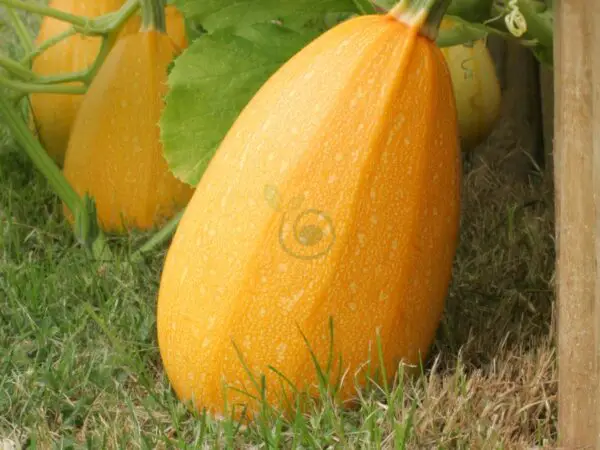Ever wondered where the intriguing quince fruit hails from? Prepare for a journey through time and continents as we uncover the origins of this unique fruit. From its humble beginnings in ancient times in the Caucasus region to its widespread cultivation across various countries, the quince's history is as rich and diverse as its flavor profile.
Delve into how this fruit has traveled through centuries, adapting to different climates and cultures along the way. Uncover surprising facts about where it thrives best and how it has become a symbol of love and fertility in various traditions. Get ready to explore the captivating story behind where this extraordinary fruit calls home.
Key Takeaways
- Quince fruit originated in the Middle East and Southwest Asia, known for its unique flavor and fragrance.
- The historical significance of quince dates back to ancient times, where it was revered by various cultures for its symbolic meanings and medicinal properties.
- Understanding the characteristics of quince, such as its tough outer skin and astringent taste, can help in selecting and preparing this fruit effectively.
- Incorporating quince into your diet can offer health benefits like high fiber content, antioxidants, and vitamins that support overall well-being.
- Explore diverse culinary uses of quince, from making jams and jellies to adding a sweet-tart element to savory dishes like stews and roasts.
- Experiment with quince in recipes like poached quince, quince tarts, or quince paste to experience its versatile nature in cooking.
- When cooking with quince, consider methods like poaching, baking, or stewing to enhance its flavor and tenderize its firm texture.
- Finding quince fruit may require visiting specialty stores, farmers' markets, or exploring online sources to enjoy this unique fruit's culinary delights.
- Embrace a cultural and culinary exploration by incorporating quince into traditional dishes from various cuisines worldwide, adding a touch of exotic flavor to your meals.
Quince Origins
Ancient Roots
Quince fruit has a long history, originating in ancient Mesopotamia and being cultivated for thousands of years. Evidence points to regions like Persia and the Mediterranean as early adopters of quince cultivation. The fruit held significant value in ancient civilizations due to its believed medicinal properties.
The rich history of quince showcases its importance throughout the ages, with various cultures recognizing its unique qualities. For example, ancient Greeks associated quince with love and happiness, often gifting it during weddings. This historical significance highlights how deeply intertwined quince is with human civilization's past.
Geographical Spread
Native to the Caucasus region encompassing countries such as Armenia, Georgia, and Azerbaijan, quince found its way across continents over time. From Europe to North Africa and Asia, the cultivation of this fruit expanded globally. Today, temperate regions worldwide host thriving quince trees bearing their fragrant fruits.
Countries like Turkey, Iran, Greece, Portugal have embraced quince cultivation wholeheartedly alongside newer territories like South America or Australia. Despite this widespread distribution pattern across different continents over centuries – from medieval Persian gardens to modern orchards worldwide –quinces remain somewhat elusive compared to mainstream fruits.
Modern Distribution
Modern-day distribution sees a resurgence in popularity for this once-prized fruit that had somewhat faded into obscurity amidst more common options on grocery shelves. Countries such as Turkey boast flourishing production alongside traditional growers like Greece or Portugal. In regions far from their origins—like South America or Australia—quinces find new homes among farmers seeking unique crops beyond conventional choices.
Historical Significance
Cultural Importance
Quince fruit has a rich cultural significance in various countries worldwide. It is deeply intertwined with traditions and celebrations, symbolizing different meanings across cultures. For example, in some regions, quince is a powerful symbol of love and fertility, often used in weddings or given as gifts to express affection. The fruit's aromatic flavor and unique texture make it a staple ingredient in many traditional dishes globally.
The culinary customs associated with quince are diverse and reflect the fruit's esteemed status in different societies. From jams to desserts, quince plays a pivotal role in creating flavorful delicacies that have been passed down through generations. Its versatility allows for both sweet and savory applications, making it a prized component of various cuisines around the world.
Legends and Myths
Throughout history, quince has been featured prominently in numerous legends and myths that highlight its mystical allure. In Greek mythology, the association between quince and Aphrodite, the goddess of love, adds an enchanting layer to the fruit's symbolism. The golden apple mentioned in the tale of the Trojan War is believed by some scholars to be none other than this captivating fruit.
These mythical connections elevate quince from being merely a fruit to embodying deeper meanings related to romance, beauty, and desire. The enduring presence of quince in ancient stories underscores its enduring appeal across centuries as a mysterious yet cherished element steeped in legend.
Understanding Quince
Taste Profile
Quince fruit, originating from the Middle East, offers a unique taste that blends sweetness with tartness. When fully ripe, it exudes a delightful floral aroma and flavors reminiscent of both pear and apple. The taste of quince becomes more pronounced when it is cooked or transformed into jams and jellies.
The flavor profile of quince sets it apart from other fruits due to its balance between sweet and tangy notes. For example, when compared to apples or pears, quinces have a distinctively complex flavor profile that appeals to those seeking something different in their culinary experiences.
Texture Insights
Quince fruit boasts a firm and dense texture akin to that of a pear. Its flesh is often described as grainy or gritty, especially when consumed raw. However, cooking quinces softens their texture considerably, rendering them tender and smooth upon preparation.
When preparing dishes using quinces in their raw state versus cooked form highlights the versatility of this fruit's texture transformation during culinary processes. For instance, while raw slices may offer a crisp bite with grittiness, cooked quinces provide a velvety mouthfeel in dishes like pies or compotes.
Health Benefits
Nutritional Value
Quince, originating from the Mediterranean region, is a fruit packed with essential nutrients. It is low in calories and fat, making it a healthy choice for those watching their weight. This fruit is rich in dietary fiber, aiding digestion and promoting gut health. Quince provides a significant amount of vitamin C, an antioxidant that boosts the immune system.
The mineral content of quince includes potassium and copper, crucial for various bodily functions such as nerve transmission and energy production. These minerals help maintain proper heart function and regulate blood pressure levels. Consuming quince regularly can contribute to overall well-being due to its nutritional richness.
Medicinal Uses
Apart from its nutritional value, quince has been valued for its medicinal properties throughout history. Traditional medicine often used quince for its believed anti-inflammatory effects that can help alleviate pain and swelling in the body. The antioxidants present in quince are known to combat free radicals that cause cell damage.
In traditional practices, preparations made from quince were utilized to soothe digestive issues like indigestion or stomach discomfort. Quince was also thought to have properties that could promote general well-being by boosting immunity and reducing oxidative stress within the body.
Culinary Uses
Global Dishes
Quince, a versatile fruit, plays a significant role in various traditional dishes worldwide. In Spain, people savor quince paste known as "membrillo" alongside cheese for a delightful combination of flavors. This sweet and tangy paste complements the richness of different cheeses, creating a popular appetizer or dessert option.
In Persian cuisine, quince is utilized in an array of culinary creations ranging from savory stews to sweet jams and desserts. The fruit's unique flavor profile adds depth to dishes like Khoresht-e Beh, a Persian stew featuring tender pieces of meat cooked with quince and aromatic spices.
Cooking Techniques
There are several cooking techniques that can be employed to enhance its taste and texture. Poaching is one method commonly used to soften the firm flesh of quinces while infusing them with flavorful syrups or spices. By simmering the fruit gently in liquid over low heat, you can achieve a tender consistency ideal for both sweet and savory dishes.
Another popular technique is baking, which allows the natural sugars in quinces to caramelize slowly, resulting in a rich and luscious treat. Stewing quinces over low heat for an extended period helps intensify their aroma and sweetness. Roasting or grilling quinces can also bring out their natural sugars further by imparting a caramelized flavor that elevates various recipes.
Quince in Recipes
Jelly and Paste
Quince fruit is a versatile ingredient in various recipes. Quince jelly is a favorite, made by simmering quince with sugar until it forms a thick, flavorful spread. The resulting jelly boasts an appealing color and offers a delightful balance of sweetness and tartness. quince paste, also known as "membrillo," is a dense spread commonly enjoyed with cheese or incorporated into pastries for added richness.
One of the joys of cooking with quince lies in its ability to enhance both savory and sweet dishes. In savory recipes, such as meat stews, tagines, and sauces, the addition of quince fruit introduces a distinct flavor profile that elevates the dish's complexity. Moreover, when used in desserts like pies, tarts, crumbles, or cakes, quince imparts a unique taste that sets these treats apart from others on the table.
Savory and Sweet
When exploring culinary creations using quinces at home or professionally—whether making traditional favorites like quince jelly or experimenting with new recipes—it’s essential to appreciate this fruit's versatility. By incorporating quinces into your cooking repertoire for both sweet and savory applications alike can introduce exciting dimensions to your meals.
Cooking with Quince
Preparation Tips
When cooking with quince, start by removing the tough skin and core. To prevent browning, soak quince slices in water with lemon juice. By cooking quince slowly over low heat, you allow it to develop a rich flavor and tender texture.
For instance, when making a quince tart or jam, peeling and coring the fruit is essential. The slow cooking process brings out its natural sweetness without compromising its unique taste.
Flavor Pairings
Quince pairs exceptionally well with spices like cinnamon, cloves, and star anise. These spices enhance the fruit's subtle flavors creating a delightful combination. quince complements various cheeses such as manchego, goat cheese, and blue cheese.
Imagine enjoying a slice of manchego cheese paired with thinly sliced quince - the sweet-tartness of the fruit perfectly balancing the savory richness of the cheese. Moreover,quinces' flavor harmonizes beautifully with other fruits like apples, pears, and citrus fruits.
Finding Quince Fruit
Seasonality
Quince fruit is primarily available during the autumn months. It ripens in late summer or early fall, varying based on the region's climate. Once harvested, quinces can be stored for weeks if kept in a cool, dry place. This seasonal nature adds to its allure and makes it a sought-after ingredient for fall recipes.
Farmers' markets are excellent places to find fresh quince during its peak season. These markets often showcase locally grown produce, including quinces when they are in abundance. Some specialty grocery stores cater to customers seeking unique fruits like quince, particularly in regions where it is commonly used in cooking. The availability of quince at these locations offers consumers the chance to experience this distinctive fruit firsthand.
Purchase Locations
For those unable to source fresh quinces locally, online retailers come to the rescue by offering various quince products year-round. From jams and jellies to preserves made from this flavorful fruit, online platforms provide a convenient way for individuals worldwide to enjoy the essence of quince without being limited by geographical constraints.
Cultural and Culinary Exploration
Festivals and Celebrations
Quince fruit has a rich cultural significance that is celebrated through various festivals worldwide. For instance, in Portugal, the town of Vila Nova de Poiares hosts an annual quince festival known as "Festa do Marmelo." This festival serves as a platform to honor the fruit's heritage and importance. During these celebrations, attendees can indulge in culinary demonstrations showcasing traditional quince recipes. Moreover, visitors have the opportunity to participate in tastings of different quince-based dishes while enjoying vibrant traditional music performances.
- Quince festivals celebrate the cultural importance of the fruit.
- The "Festa do Marmelo" festival in Portugal highlights traditional quince recipes.
- Culinary demonstrations at these festivals provide insights into innovative ways to use quince.
Innovative Uses
Apart from being a staple ingredient in classic recipes, quinces have ventured into innovative applications beyond conventional cooking methods. One notable example is infusing flavors with quince into beverages like cocktails and teas, adding a unique twist to familiar drinks. Due to its antioxidant properties, extracts from quinces are incorporated into skincare products for their beneficial effects on skin health.
- Quinces are utilized creatively beyond traditional culinary uses.
- Infusing cocktails and teas with quince offers new flavor profiles.
- Skincare products benefit from incorporating antioxidants found in quinces.
You've journeyed through the origins, significance, benefits, and culinary wonders of quince fruit. Now armed with knowledge about this underrated gem, it's time to embark on your own quince-filled adventures. Explore local markets or plant a tree in your garden to savor the unique flavors and health perks quince has to offer.
Delve into the world of quince recipes, experiment in your kitchen, and share the joy with friends and family. By incorporating quince into your culinary repertoire, you not only enrich your meals but also honor centuries of tradition and culture surrounding this exceptional fruit. So go ahead, let quince be the star ingredient that adds a touch of magic to your dishes!
Frequently Asked Questions
Where is Quince Fruit Originally From?
Quince fruit originates from the region extending from Iran to the Caucasus. It has been cultivated for thousands of years and holds historical significance in various cultures.
What Are the Health Benefits of Quince?
Quince is rich in fiber, vitamins, and antioxidants, promoting digestive health and boosting immunity. Its high pectin content aids in reducing cholesterol levels.
How Can I Use Quince in Cooking?
Quince can be used to make jams, jellies, sauces, desserts like pies and tarts. Its unique flavor profile adds a sweet-tart taste to both savory and sweet dishes.
Is Quince Easy to Find for Purchase?
While not as common as other fruits, quinces are usually available at specialty grocery stores or farmers' markets during their peak season in autumn.
Why Explore the Cultural Significance of Quince?
Exploring quince's cultural importance enhances culinary experiences by understanding its traditional uses across different cuisines worldwide.
Image Source: Paid image from CANVA





